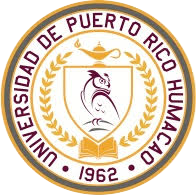History
| This article is part of a series on |
| Education in the United States |
|---|
| Summary |
| Curriculum topics |
| Education policy issues |
| Levels of education |
| |

The first school in Puerto Rico was the Escuela de Gramática (English: Grammar School). The school was established by Bishop Alonso Manso in 1513, in the area where the Cathedral of San Juan was to be constructed. The school was free of charge and the courses taught were art, history, Latin language, literature, philosophy, science and theology. [8]
The concept of public school wasn't used on the island until 1739; an official education system was created in 1865. At the time, attendance was compulsory until age 9. Public Education was organized into 500 centers by 1897.
The Foraker act of 1900 established the commissioner of education in Puerto Rico and created the department of public education. The commissioner of education was appointed by William McKinley, President of the United States. The first commissioner 1900 – 1902 was Martin Grove Brumbaugh, who was the first professor pedagogy at the University of Pennsylvania, and was president of Juniata College. He reorganized the public school system, encourage both pupils and teachers to become bilingual in Spanish and English, and built a normal school for training teachers. Brumbaugh's education policies promoted Americanization, which followed the policies of Puerto Rico's two political parties, which both were committed to turning Puerto Rico into an American state. Samuel McCune Lindsay, appointed by the Theodore Roosevelt, President of the United States served as Education Commissioner 1902 – 1904 continued the policy preparing Puerto Rico for American statehood. [9] Laws passed in 1899 required education in Puerto Rico to consist of a public system for ages six to eighteen, to limit the student/teacher ratio to 50:1, and to be coed. The 1900 Department of Public Instruction became the Department of Education in 1989. [10]
Julian Go argues that the primary goals of American policy were:
- Under American control, Puerto Ricans and Filipinos would vote in free elections, take up office, help devise legislation, and administer the colony's daily affairs-first in local (municipal) governments and later in national legislative assemblies. The native officials would be given more and more autonomy as they moved through this system, slowly learning their so-called "object lessons" in American-styled governance. Local governments would be granted more duties and functions, the legislative assemblies would be allowed to devise laws "with less and less assistance," and in general American control would be slowly loosened. The underlying principle of political education was thus: "Free self-government in ever-increasing measure." [11]
According to Go, in actual practice there was less and less local autonomy and more and more centralized control of education. The problem was that rich local elites based in the Federal Party had taken local control, and were not prepared to introduce local democracy against their personal interests. Go argues that the local elites were corrupt and used the system for their own personal benefit, including pocketing a slice of the local government budget. [12]
The commissioner of education led efforts to introduce American culture in preparation for a democratic society that would be admitted as an equal state to the union. [13] English-language instruction was dominant until 1939, when Spanish was made the official language of instruction. [14] English is currently taught as a second language beginning from first grade and continuing straight through senior year of high school.[ citation needed ][ dubious – discuss ]
Following American principles of separation of church and state, public school education became independent of religious instruction. The teaching of US history, replacing Puerto Rican historical figures with American ones, reciting the Pledge of Allegiance, and the celebrating American holidays were means to Americanize students on the island. [15] Americanization was meant to uplift the locals. The United States founded schools and trained both US and Puerto Rican teachers in education. Puerto Rican teachers were sent to the United States to receive training. In the island, US teachers would train Puerto Rican teachers. By 1913, the US government had invested 14 million dollars on public education in the island and 1,050 schools had been built in rural areas. [13]
Protestants from the mainland arrived to build a non-Catholic educational infrastructure. Presbyterians were highly active and founded many primary and secondary schools. Presbyterian missionaries all spoke Spanish and were committed to supporting the local Hispanic cultural heritage. [16]
Despite the dominance of Protestant and secular public education, Catholic schools also expanded during the early twentieth century. During the colonial era, there had been only three Catholic schools, but by 1917, there were twenty-seven. Another twenty-five had been founded by 1940. [17]

































